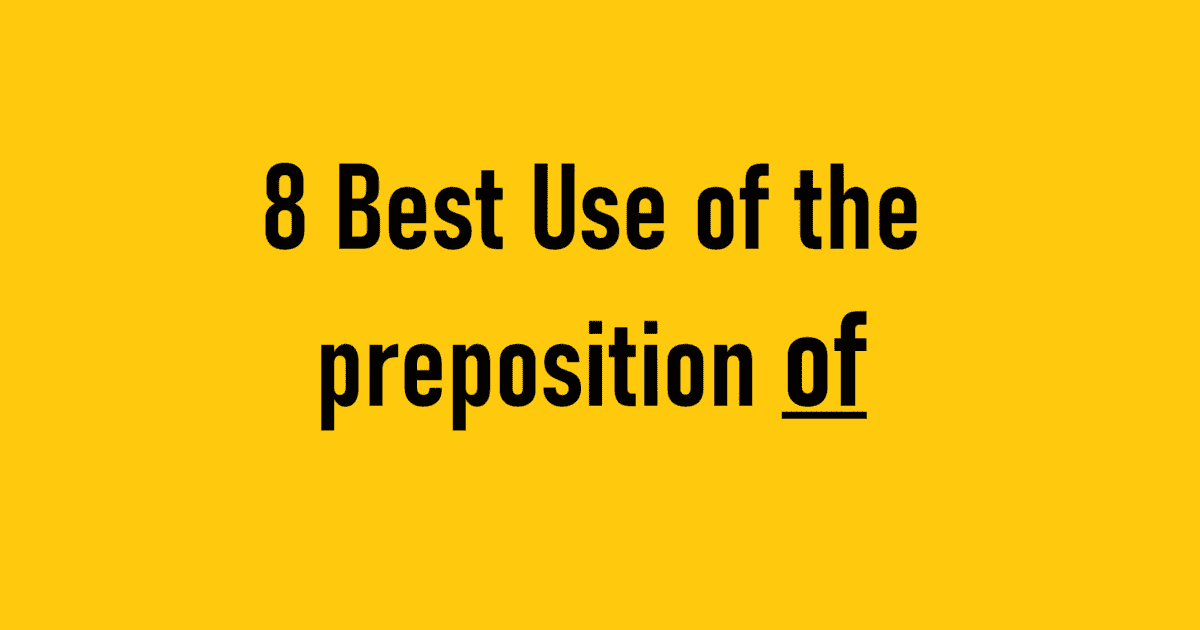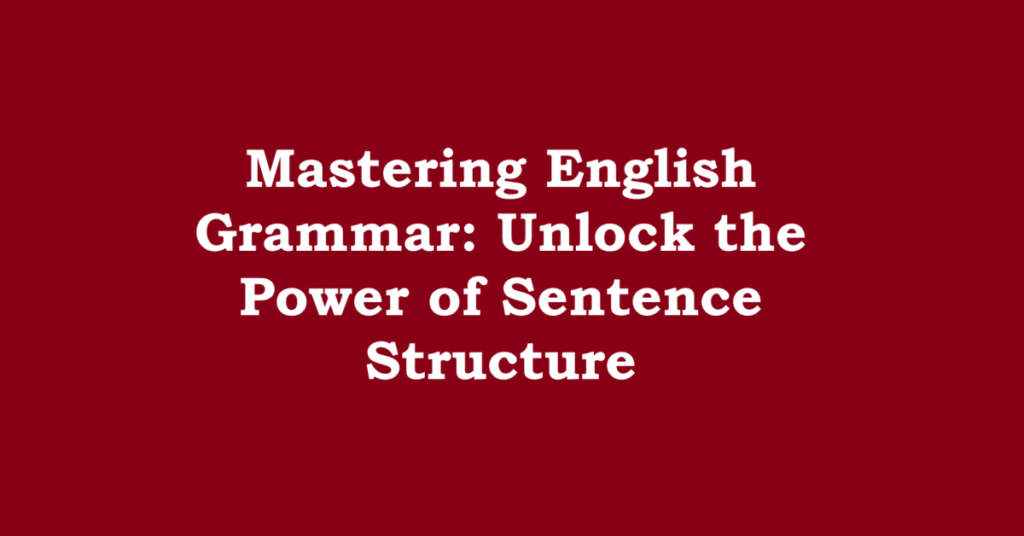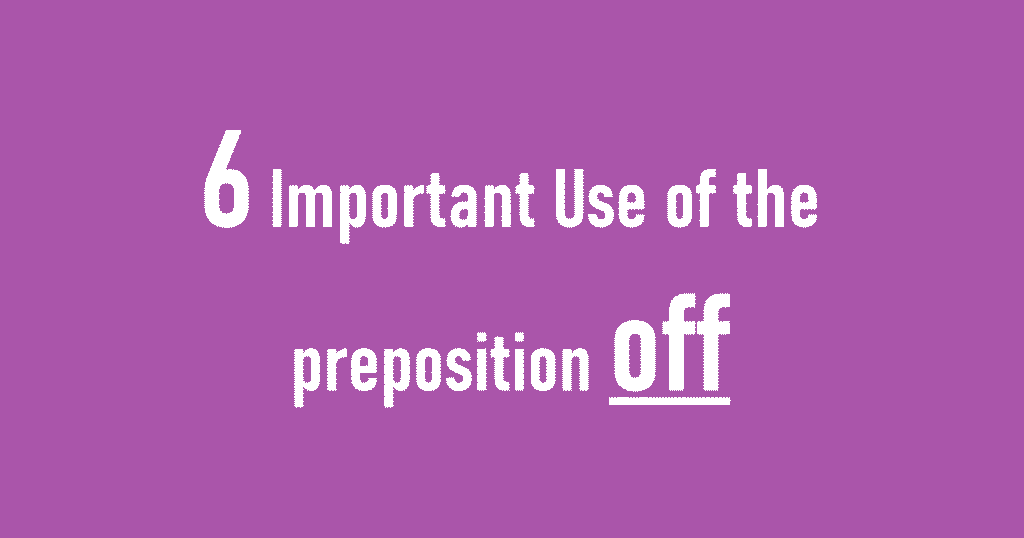Use of the preposition of. The humble preposition “of” might seem like a minor player in the English language, a tiny cog in the grand machine of syntax. But don’t let its size fool you! “Of” is a workhorse, a multifaceted grammatical tool with a surprising range of functions and a tendency to subtly alter meaning. Understanding its various uses is crucial for clear, concise, and grammatically sound writing. This post will delve deep into the world of “of,” exploring its different roles and offering guidance on its proper application.
Use of the preposition of
1. Possession and Relationship:
Perhaps the most common and easily understood use of “of” is to indicate possession or a relationship between two nouns. In this context, “of” essentially acts like an apostrophe-s (‘s) showing ownership. However, while apostrophe-s is usually reserved for animate nouns, “of” is often used for inanimate objects.
- Example: “The roof of the house” (instead of “The house’s roof,” which sounds less natural)
- Example: “The beginning of the movie”
- Example: “The history of the company”
Beyond simple ownership, “of” can indicate a more abstract relationship, such as belonging, connection, or characteristic.
- Example: “He is a member of the team.” (belonging)
- Example: “The smell of freshly baked bread filled the air.” (connection/characteristic)
- Example: “She is a descendant of a famous general.” (relationship/lineage)
It’s important to note the difference between “of” showing possession and using the genitive’s. Generally:
- Inanimate objects and abstract nouns: Use “of” (e.g., “The cover of the book,” “The importance of education”).
- Animate objects, particularly people and animals: Use ‘s (e.g., “The dog’s collar,” “My sister’s car”).
- Time, places, and groups of people: Often use ‘s (e.g., “A week’s vacation,” “America’s future,” “The team’s victory”).
However, these are guidelines, not rigid rules. Sometimes, using ‘s with an inanimate object sounds perfectly fine, especially when personification is involved (e.g., “The city’s heart”).
2. Composition or Material:
“Of” can also denote the composition or material that something is made from. This is often interchangeable with “made of.”
- Example: “The table is made of wood.”
- Example: “The table is of wood.” (Less common, but still grammatically correct)
- Example: “A ring of gold”
- Example: “A house of bricks”
- Example: “A statue of bronze”
In these cases, “of” specifies the substance that constitutes the object.
3. Measure or Quantity:
“Of” is frequently used to express a measure, quantity, or amount. This usage is often seen with collective nouns or units of measurement.
- Example: “A cup of coffee”
- Example: “A handful of sand”
- Example: “A piece of cake”
- Example: “A group of students”
- Example: “A pound of sugar”
Here, “of” links the quantity or unit of measurement to the thing being measured.
4. Origin or Source:
“Of” can indicate the origin or source of something, pointing to where it comes from or who created it.
- Example: “A painting of Picasso” (meaning painted by Picasso)
- Example: “The plays of Shakespeare”
- Example: “A song of hope” (meaning a song expressing hope)
- Example: “Wine of France” (meaning wine from France)
- Example: “He is a man of few words.” (meaning a man with few words)
In this context, “of” connects the thing with its creator, source, or origin.
5. Description or Quality:
Sometimes, “of” functions to describe or qualify a noun, adding detail about its characteristics.
- Example: “A woman of great intelligence”
- Example: “A man of honor”
- Example: “A matter of great importance”
- Example: “A day of celebration”
In these phrases, “of” introduces a defining characteristic or quality of the noun.
6. In Phrases with Verbs:
“Of” is integral to many phrasal verbs and idiomatic expressions, significantly impacting the meaning. Understanding these is key to mastering the nuances of English.
- Think of: To consider something
- Consists of: To be composed of
- Remind of: To cause someone to remember something
- Beware of: To be cautious of
- Approve of: To agree with or support something
- Die of: To cease living because of a particular cause
- Take care of: To look after something or someone
- Get rid of: To eliminate or discard something
These examples demonstrate how “of” contributes to the overall meaning of the verb phrase, often transforming the verb’s original sense.
7. “Off Of”: The Controversial Usage
The phrase “off of” is often debated and considered redundant by many grammar purists. It frequently appears in colloquial speech, especially in certain regional dialects, but it’s generally advised to avoid it in formal writing.
- Example (Informal): “He fell off of the ladder.”
- Correct: “He fell off the ladder.”
The “of” is unnecessary and clutters the sentence. In most cases, simply using “off” is sufficient and grammatically correct.
8. Avoiding Common Errors with “Of”:
Several common errors involve the misuse or omission of “of.” Being aware of these can help you refine your writing.
- Incorrect: “Outside the house” (This sounds incomplete).
- Correct: “Outside of the house” (This is grammatically correct).
- Incorrect: “Inside the box” (Similar to above).
- Correct: “Inside of the box” (More formal and grammatically sound).
However, in many cases, simply using “in” or “out” works better: “He is in the house,” “She is out of the office.”
- Incorrect: “Different than” (This is common but often considered incorrect).
- Correct: “Different from” or “Different to” (Both are grammatically correct, though “different from” is more widely accepted).
- Confusing “of” with “have”: This typically happens in contractions. “Could have” is often mistakenly written as “could of.” The correct usage is always “could have,” “should have,” “would have.” The contraction is “could’ve,” “should’ve,” “would’ve.”
9. When To Omit “Of”:
While “of” is crucial in many contexts, it’s sometimes better to omit it for brevity and clarity.
- With some prepositions of place and time: “East of the city” is fine, but “East city” (referring to the east side of the city) is perfectly acceptable in many contexts. Similar examples include “North London” and “South Africa.”
- With certain collective nouns: “A group of students” is acceptable in some informal contexts, though “A group of students” is more formal.
The key is to assess whether omitting “of” affects the clarity and grammatical correctness of the sentence.
Conclusion:
The preposition “of” is far more complex and versatile than it initially appears. From indicating possession to defining composition and playing a vital role in countless phrasal verbs, “of” is a fundamental building block of the English language. By understanding its diverse functions and being mindful of common errors, you can wield this little word with greater precision and confidence, enhancing the clarity and accuracy of your writing. So, the next time you encounter “of,” take a moment to appreciate its power and significance – it’s a small word that makes a big difference.
Read Also,


